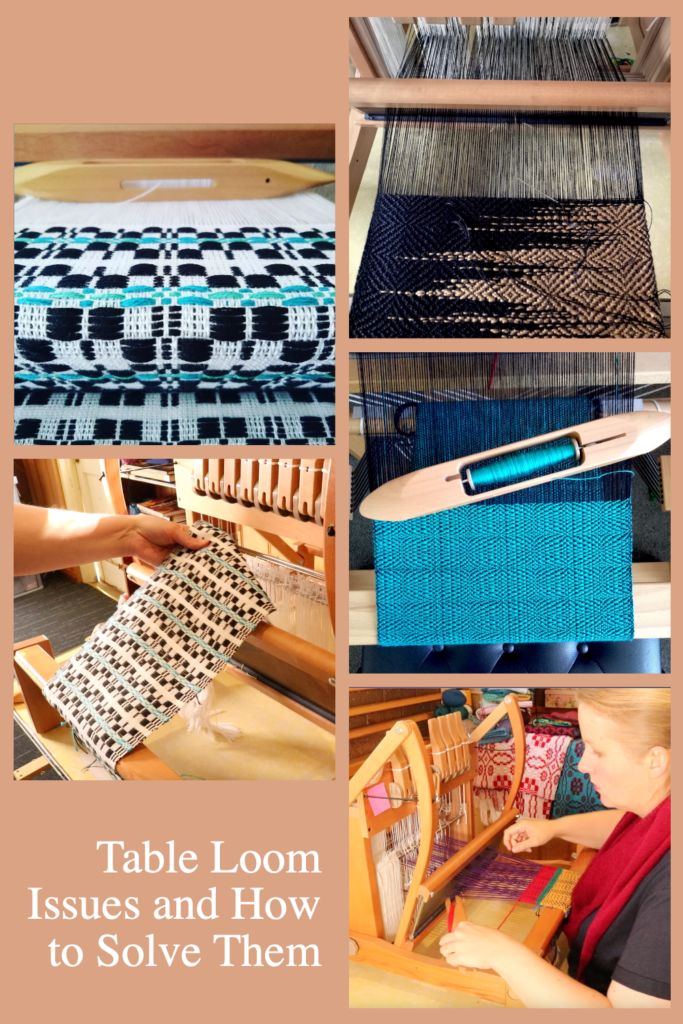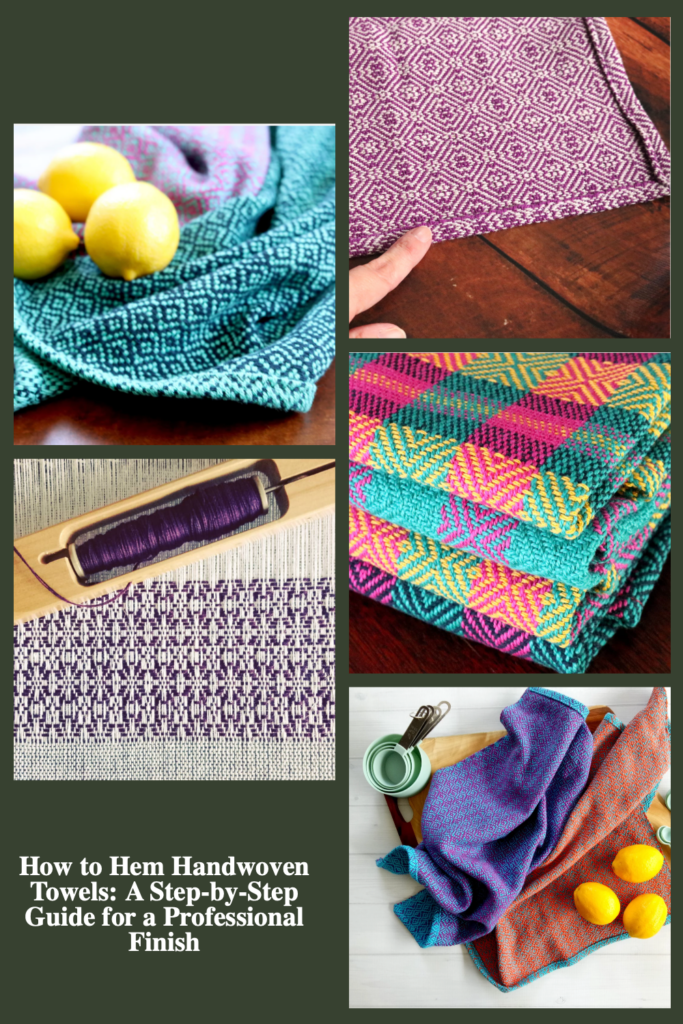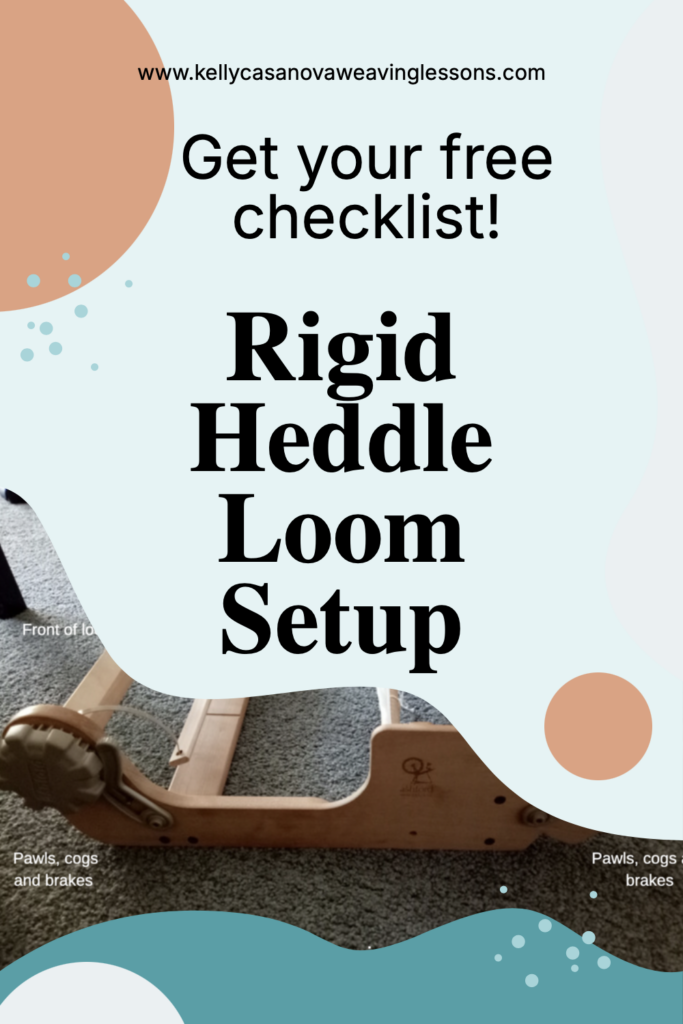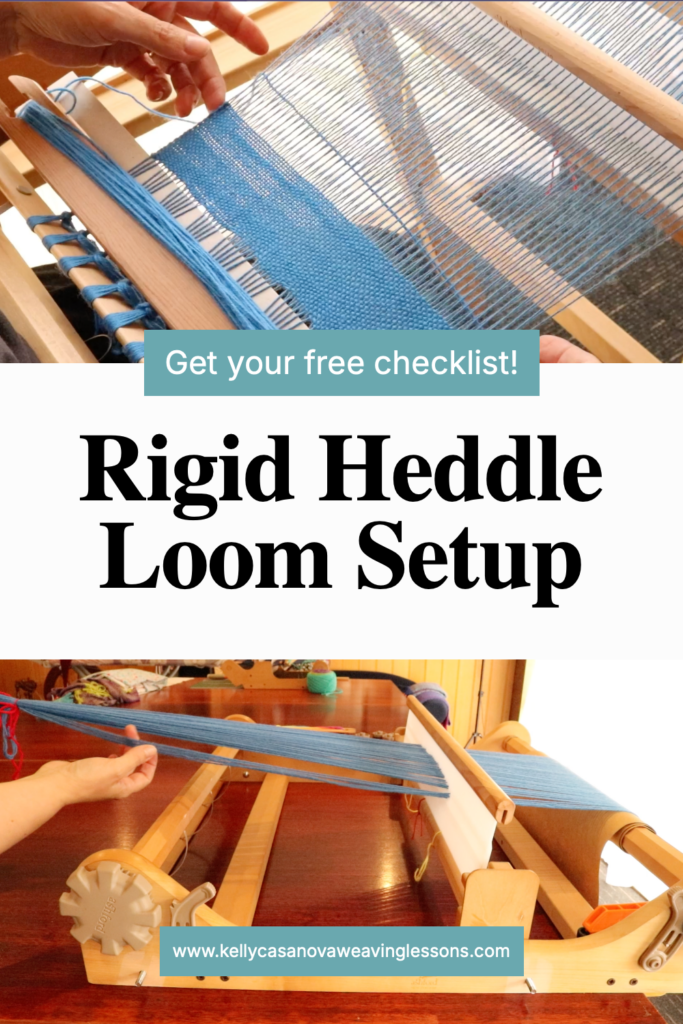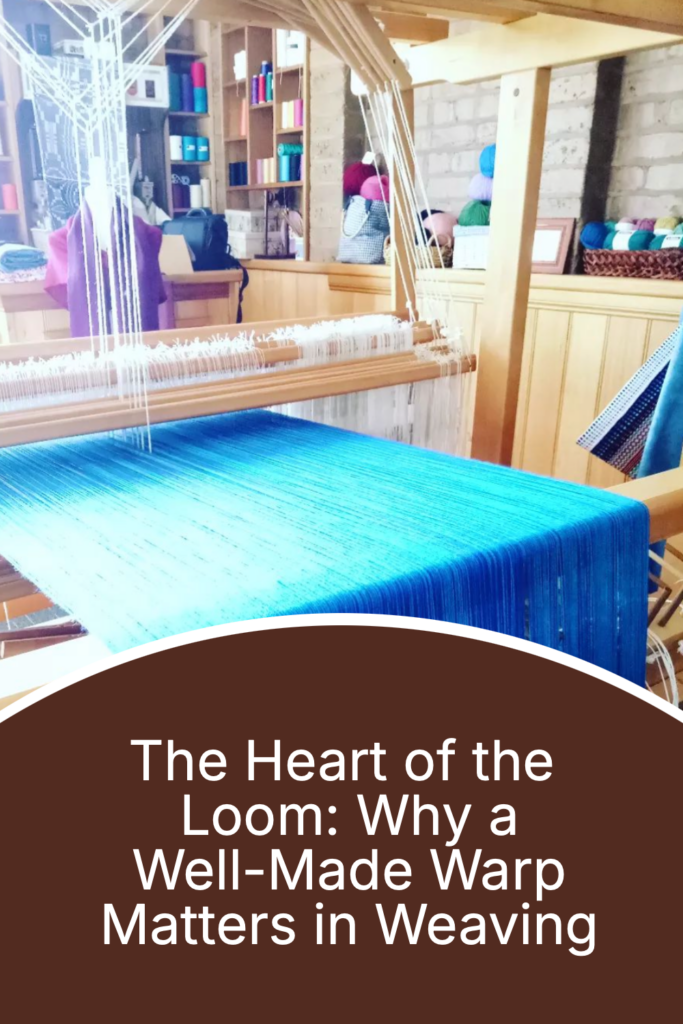Discover the best weaving looms for small spaces! Explore compact looms like rigid heddle, table, and frame looms, and learn tips for maximizing your weaving setup in a small area.
For many, the idea of weaving often brings to mind large looms and expansive studios—luxuries that aren’t feasible for those living in small apartments or homes with limited space.
The good news? Weaving is for everybody!
You don’t need a massive loom or a dedicated room to enjoy weaving! Thanks to modern designs and variety of loom availability, there are plenty of compact weaving looms that fit perfectly into small spaces and still give you a huge array of project options.
In this guide, we’ll explore the best weaving looms for small spaces, from lightweight rigid heddle looms to ultra-portable inkle looms. I’ll also share tips for maximizing your space and creating an inspiring weaving environment, no matter how small your space might be. Let’s dive in and discover the perfect loom for your needs!
What to Consider When Choosing a Loom for Small Spaces
- Size and Portability:
- You may want to focus on looms that are lightweight, foldable, or easy to store. Some looms, while not being fully foldable, will have fold down parts to reduce their bulk.
- Consider how frequently you will need to be moving your loom. Ensure that the size and weight make this a manageable task.
- Type of Loom:
- Consider what it is you want to be weaving or how you think you will be using the loom. This will help to determine the suitability of the loom type.
- The type of loom will also affect the size of the loom. For example, an inkle loom will almost always be smaller than a table loom.
- Additional extras like a stand for your loom will take up extra space but many stands are now designed to have compact storage, like the Ashford Rigid Heddle Stand.
- Functionality vs. Space:
- Think about the trade-offs you might need to make when deciding on the right loom. Try to find a balance between features like multiple shafts and space limitations to minimise the possibility of loom regret or loom envy later on.
- Do plenty of research! You may be convinced that you will never have enough space for a floor loom, but there are compact floor looms like the Louet David.
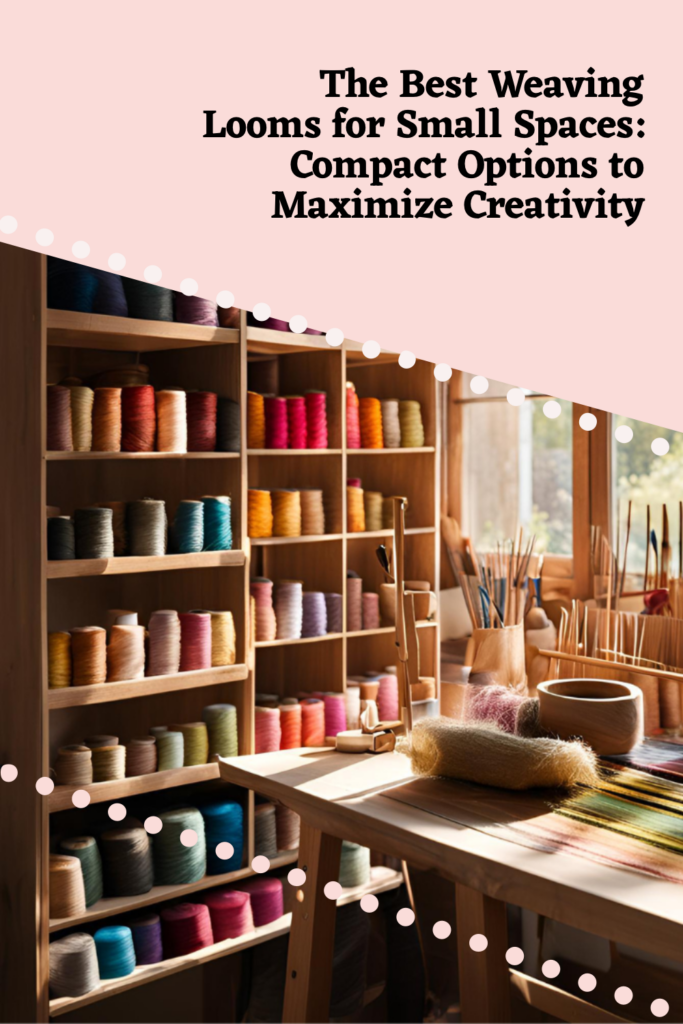
Top Compact Weaving Looms for Small Spaces
Rigid Heddle Looms
- Versatile projects are possible; compact and beginner-friendly.
- Rigid heddle looms come in a big range of sizes, so you really can find one to suit your space.
- Some rigid heddle looms, like the Ashford Knitter’s Loom are foldable.
- Double width weaving is possible with two heddles.
- Examples:
- Ashford SampleIt Loom: Lightweight and easy to store, comes in a 10″ and 16″ weaving width.
- Schacht Cricket Loom: Great for portability and small weaving projects. Available in 10 and 15″ weaving width.
Table Looms
A table loom will inevitably take up more space than a rigid heddle loom, but they are wonderful for the weaver who wants to enter the multi shaft weaving world but has limited space.
- Ideal for intermediate weavers looking for more complexity.
- A huge variety of patterning possibilities.
- Examples:
- Louet Jane Table Loom: Compact yet offers multi-shaft functionality. 8 shafts, starts at 16″ weaving width. Folds down and has the added bonus of a built in raddle, limiting the “off loom” equipment needed.
- Ashford Table Loom: Foldable for easy storage. 8 shafts. Castle folds down for flatter storage and easier portability. Starts at 16″ weaving width.
Frame Looms
- Perfect for beginners or simple projects; affordable and space-efficient. Extremely portable and space efficient.
- Examples:
- Louet Lisa Loom: The smallest Lisa is just 7.5 x 9.5″. Portable and flat for easy storage, great for beginners.
- Mirrix Tapestry Looms. The Saffron Pocket loom is the smallest in the range. For weaving tapestries and bead weaving.
- Potholder loom: Usually a very small loom to weave fabric squares. You can find out how to make your own potholder loom and weave on it here.
Inkle Looms
Inkle looms are a “pick up and go” loom. They weigh very little and can be popped into a bag for easy transport.
- For weaving narrow projects like belts, bands or straps. Bands can also be sewn together to make a larger item like an inkle bag.
- Examples:
- Ashford Inkle Loom: Simple design, perfect for beginners.
- Ashford Inklette Loom: Super compact and portable.
Toy Looms
- Great for small projects or weaving on-the-go.
- Examples:
- Lavievert Toy Weaving Loom: Compact, easy to set up, fun to weave on.
Tips for Maximizing Small Weaving Spaces
- Smart Storage Solutions:
- Use stackable tubs, wall-mounted racks, shelving or under-bed storage.
- Multipurpose Furniture:
- Use foldable tables, lap desks, or compact workstations. An adjustable office chair makes a very comfortable weaving chair and can be used for other purposes.
- Go Vertical:
- Install wall shelves for yarn, tools, books and looms. Small looms like the Sampleit can be hung on the wall with some simple hooks.
- DIY Organization Ideas:
- Hooks for hanging tools or pegboards for accessories. Stackable clear and lidded boxes are so useful! Drawers on wheels or shelf carts for supplies you want close to hand but can store out of the way again.
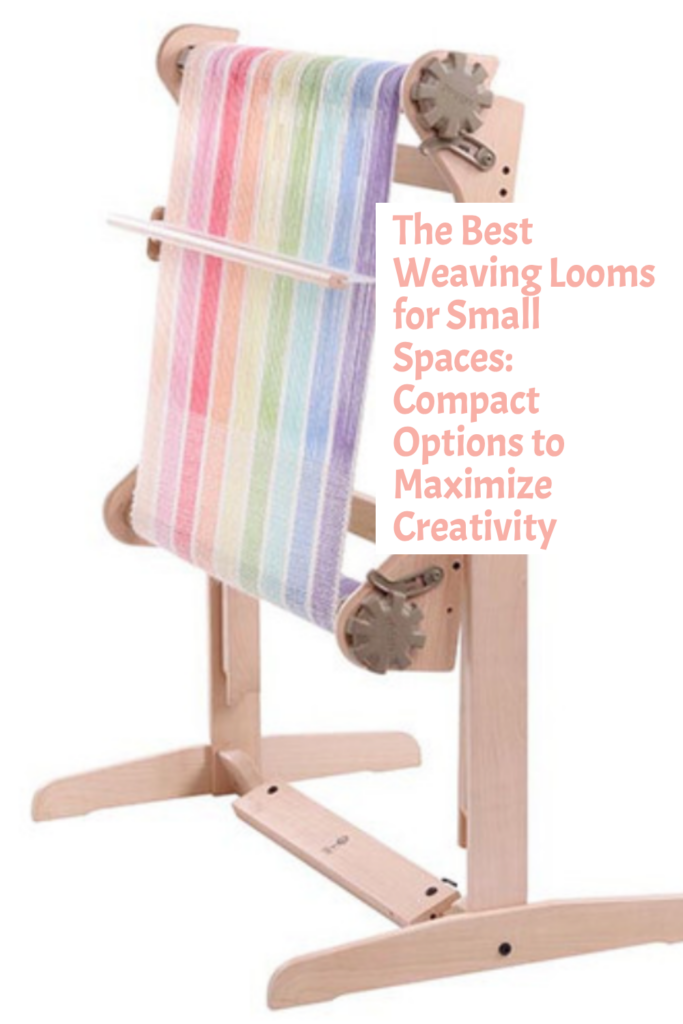
Comparing Features and Price Points
Here’s a comparison of some top weaving looms suitable for small spaces (please note that these details were correct at the time of writing this article and are subject to change. Prices are in USD):
Ashford 8-Shaft Table Loom
Type: Table Loom
Weaving Widths: 16″ (40cm), 24″ (60cm), 32″ (80cm)
Dimensions (W x H x D):
- 16″: 22″ x 22″ x 29″
- 24″: 30″ x 22″ x 29″
- 32″: 38″ x 22″ x 29″
Weight: - 16″: 18 lbs (8.2 kg)
- 24″: 23 lbs (10.4 kg)
- 32″: 27 lbs (12.3 kg)
Key Features: - Folds flat to 7″ for easy storage and transport
- Overhead beater for even beating
- Independent shaft lifting levers
Approximate Price: - 16″: $1,200
- 24″: $1,400
- 32″: $1,600
Schacht Cricket Loom
Type: Rigid Heddle Loom
Weaving Widths: 10″ (25cm), 15″ (38cm)
Dimensions (W x H x D):
- 10″: 11″ x 18″ x 6″
- 15″: 16″ x 18″ x 6″
Weight: - 10″: 4 lbs (1.8 kg)
- 15″: 5 lbs (2.3 kg)
Key Features: - Compact and portable
- Made of high-quality maple
- Includes 8-dent reed, threading hook, warping peg, table clamps, two shuttles, and yarn
Approximate Price: - 10″: $229
- 15″: $252
Ashford Katie Table Loom
Type: Table Loom
Weaving Width: 12″ (30cm)
Dimensions (W x H x D): 19″ x 19″ x 11″
Weight: 14 lbs (6.5 kg)
Key Features:
- 8 shafts
- Folds flat for portability
- Overhead beater for even tension
Approximate Price: $1,000
Ashford SampleIt Loom
Type: Rigid Heddle Loom
Weaving Widths: 8″ (20cm), 10″ (25cm)
Dimensions (W x H x D):
- 8″: 12″ x 18″ x 5″
- 10″: 14″ x 18″ x 5″
Weight: - 8″: 3 lbs (1.4 kg)
- 10″: 4 lbs (1.8 kg)
Key Features: - Affordable and lightweight
- Ideal for beginners
- Includes 7.5 dpi reed, two shuttles, threading hook, warping peg, and clamp
Approximate Price: - 8″: $150
- 10″: $170
Ashford Inkle Loom
Type: Inkle Loom
Weaving Width: Up to 3″ (7.5cm)
Dimensions (L x W x H): 25.5″ x 6.75″ x 11.25″
Weight: 4 lbs (1.8 kg)
Key Features:
- Ideal for weaving belts and bands
- Adjustable tension
- Solid hardwood construction
Approximate Price: $120
Ashford Inklette Loom
Type: Inkle Loom
Weaving Width: Up to 2″ (5cm)
Dimensions (L x W x H): 14.75″ x 4.5″ x 7.25″
Weight: 1.3 lbs (0.6 kg)
Key Features:
- Ultra-portable, ideal for narrow bands
- Adjustable tension
- Solid hardwood construction
Approximate Price: $80
You may also be wondering whether owning a small loom will give you enough weaving project options? Well, check out this article to get some ideas for what you can weave on a small loom:
What can I weave on a small loom?
I hope that this article has helped you to see that small spaces can be transformed into a creative haven with the right loom and setup.
Are you a small space weaver yourself? Share in the comments below to help others with your best small space weaving tips and the type of loom you have! ⬇️
Take a moment to subscribe for more weaving tips, product reviews and weaving know how!
Until next time…
Happy Weaving!
*This post contains affiliate links. For more information, please see my disclosure policy.

